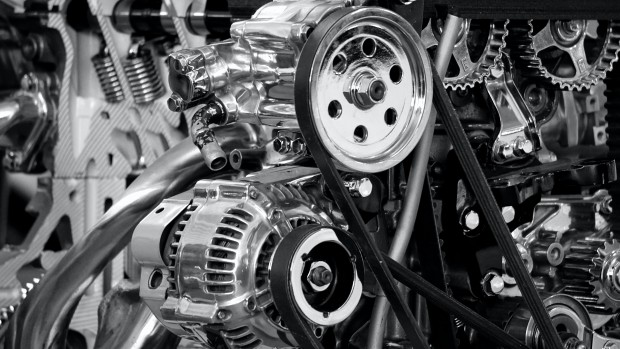An automobile’s engine, a feat of engineering and accuracy, is its beating heart. Chevy, one of the most prestigious automakers, has a history of invention and has pushed the limits of dependability, performance, and durability. But there is also a story of failures and disappointments in this history of success, best represented by a few engines that have damaged the brand’s image.
Troubled Models and Infamous Engines:
- Chevrolet Vega: The Vega, a notorious model of Chevrolet that debuted in the 1970s, used an aluminum engine. The aluminum block was innovative, but it had serious dependability problems. The aluminum engine architecture caused warping, cylinder head gasket failures, and overheating issues, which damaged Vega’s reputation.
- 5.7L Diesel V8: Chevrolet debuted a diesel version of its 5.7L V8 engine in reaction to the oil crisis of the late 1970s. Regrettably, the results of this diesel technology trial were terrible. Numerous difficulties beset the engine, such as low fuel efficiency, subpar performance, and most critically, severe reliability concerns, which caused it to become notorious and be discontinued quickly.

- 4.3L Vortec V6: While the Vortec engine line was well-received, there were difficulties with the 4.3L V6 version. It had a bad reputation for gasket failures in the intake manifold, which might result in coolant leaks and engine overheating. The engine’s dependability and performance were severely harmed by these ongoing gasket problems, which plagued many variants.
- Other notorious engines: Even though they were not as notorious as the previously listed engines, Chevrolet created several engines throughout its history that had persistent problems. These issues, which included early wear, excessive oil consumption, and electrical malfunctions, had an adverse effect on the dependability and efficiency of the engines and cast doubt on certain Chevrolet models.
Design and Performance Flaws:
- Inherent Design Flaws Leading to Failure: There were serious problems caused by intrinsic design defects in a few Chevrolet engines. For example, overheating issues were frequently caused by insufficient cooling systems and poorly built intake manifolds. In addition to impairing performance, engines’ inclination to overheat also led to early engine wear and even catastrophic breakdowns. These flaws in the design served as a clear reminder of the need for careful planning and thorough testing.
- Lack of Durability: Certain Chevy engines suffered from a lack of durability, which reduced their dependability and lifespan. These problems were caused by decisions made on design and materials, such as the use of subpar parts that were more prone to damage. The need for improved materials and manufacturing techniques was highlighted by the engines’ propensity for failures ranging from early valve train problems to wear and tear on the bearings and piston rings.
- Performance Issues: Several Chevrolet engines fell short of performance standards in terms of power output and fuel economy. These engines frequently had poor fuel efficiency, slow acceleration, and insufficient torque. Customers were left with a disappointing driving experience as a result, which negatively impacted Chevrolet’s sales and image.
- Overheating and Oil Consumption: In some Chevy engines, overheating and oil use were recurrent issues. These problems were frequently related since overheating can result in a rise in oil consumption. These issues were usually the result of a confluence of bad design, subpar cooling systems, and material selection, all of which reduced the engines’ durability and dependability.

Impact on Chevy’s Reputation and Industry Perception:
The inadequacies and mishaps of several Chevrolet engines had a big effect on the brand’s image and the way the industry was seen in a few diverse ways:
- Customer Trust and Perception: Since engines are the heart of a car, repeated problems and failures with these engines damaged the trust that customers had in Chevrolet’s offerings. Consumers who had issues with these engines were suspicious of the brand, which had an impact on their allegiance and faith in Chevrolet’s dependability. The brand’s reputation was directly impacted by this breakdown of trust, which may have resulted in dissatisfied customers who were reluctant to buy Chevy cars.
- Market Perception and Competition: Chevrolet’s competitive edge suffered because of its lineup’s troublesome engines. In a market where dependability and efficiency are essential selling features, Chevy’s position relative to rivals was influenced by the reputation of these engines. It further hurt Chevrolet’s market share and sales by enabling other automakers to use the company’s mistakes to promote their automobiles.
- Brand Image and Long-Term Impact: Chevrolet’s reputation for dependability and engineering prowess was damaged by the mishaps resulting from these engines. Even if several vehicles and engines were warmly welcomed, the mishaps involving these engines had a long-lasting effect on public opinion and the story of Chevrolet’s dedication to quality and innovation.
- Addressing Reputation Challenges: Chevrolet had to spend time and money repairing the harm these engine failures had done to its reputation and brand. This involved putting new quality control procedures into place, providing longer guarantees, and starting advertising campaigns that highlighted enhanced engineering techniques in subsequent models.
- Industry Lessons Learned: Both Chevrolet and the larger automotive industry learned a great deal from the problems with these engines. They emphasized the need for comprehensive testing, strict quality control procedures, and engineering methods that prioritize reliability. Chevrolet’s approach to subsequent engine development has been informed by these lessons, which emphasize the ongoing quest for performance and dependability in their vehicles.
The Road Ahead: Chevrolet’s Future in Engine Development:
- Enhanced Quality Control Measures: Chevrolet increased the rigor of its quality control procedures and used innovative testing techniques to anticipate and address potential problems with newly designed engines.
- Innovation and R&D: The company made large R&D investments to investigate innovative technology and more dependable, efficient engine designs. This involved using state-of-the-art materials and techniques to improve longevity and performance.
- Sustainability & Efficiency: Chevy set out to create engines that not only met customer desires and worldwide trends but also prioritized fuel efficiency and lower emissions, in line with an industry-wide emphasis on environmental responsibility and sustainability.
- Customer-Centric Approach: Chevy refocused on a customer-centric strategy, using input to modify their engines to satisfy the requirements, tastes, and expectations of its customers. The brand’s objective was to restore confidence and trust using enhanced communication and openness.
- Continued Adaptation: Chevy made sure its next engine advances considered changing engineering techniques and breakthroughs in the automobile industry by remaining flexible and receptive to technological advancements.
Frequently Asked Questions (FAQs):
Which Chevy engine is the strongest?
Because of its remarkable power, performance, and dependability, the 6.2-liter supercharged LT4 engine, which is a member of the Chevrolet Small Block V8 engine family, is considered one of the strongest engines in the Chevrolet portfolio.
Which V-8 engines was Chevy producing?
Known for their adaptability and power, Chevrolet has built a variety of V-8 engines, including Small Block V8 and Big Block V8 variations.
Does Chevrolet have greater power than Ford?
Specific models may differ in power production, but Ford and Chevrolet each have competing options, so it is difficult to say with certainty which one always produces more power than the other.
Does Chevy outperform Toyota?
Vehicle performance comparisons between Toyota and Chevrolet might change depending on the models and categories. When assessing performance, it is important to consider different models and their intended applications since both manufacturers provide high-performance and efficient solutions.
Conclusion:
Looking back, Chevrolet’s experience with its weakest engines has been a story of resiliency, growth, and development. The brand’s history is shaped by its blunders and failures with engines like the Vega, Diesel V8, and Vortec V6, among others. These events underscore the significance of an unbroken dedication to technical excellence and set the course for the brand’s future.

